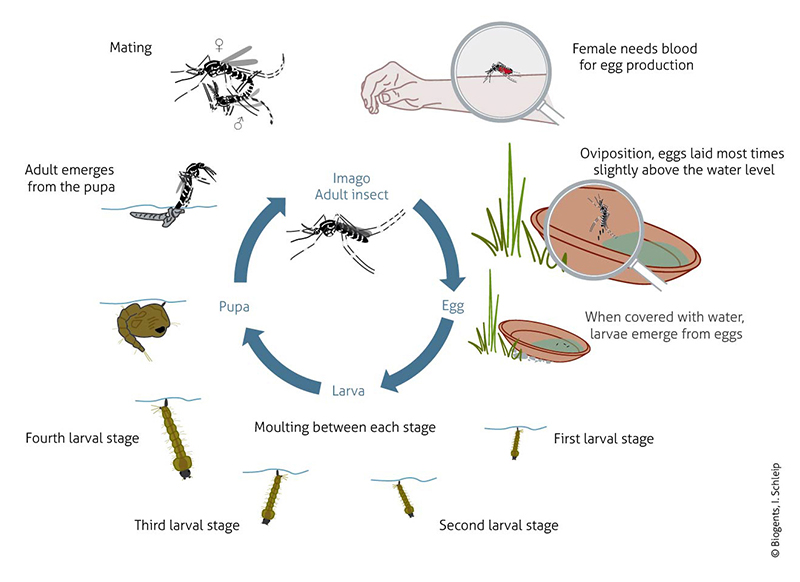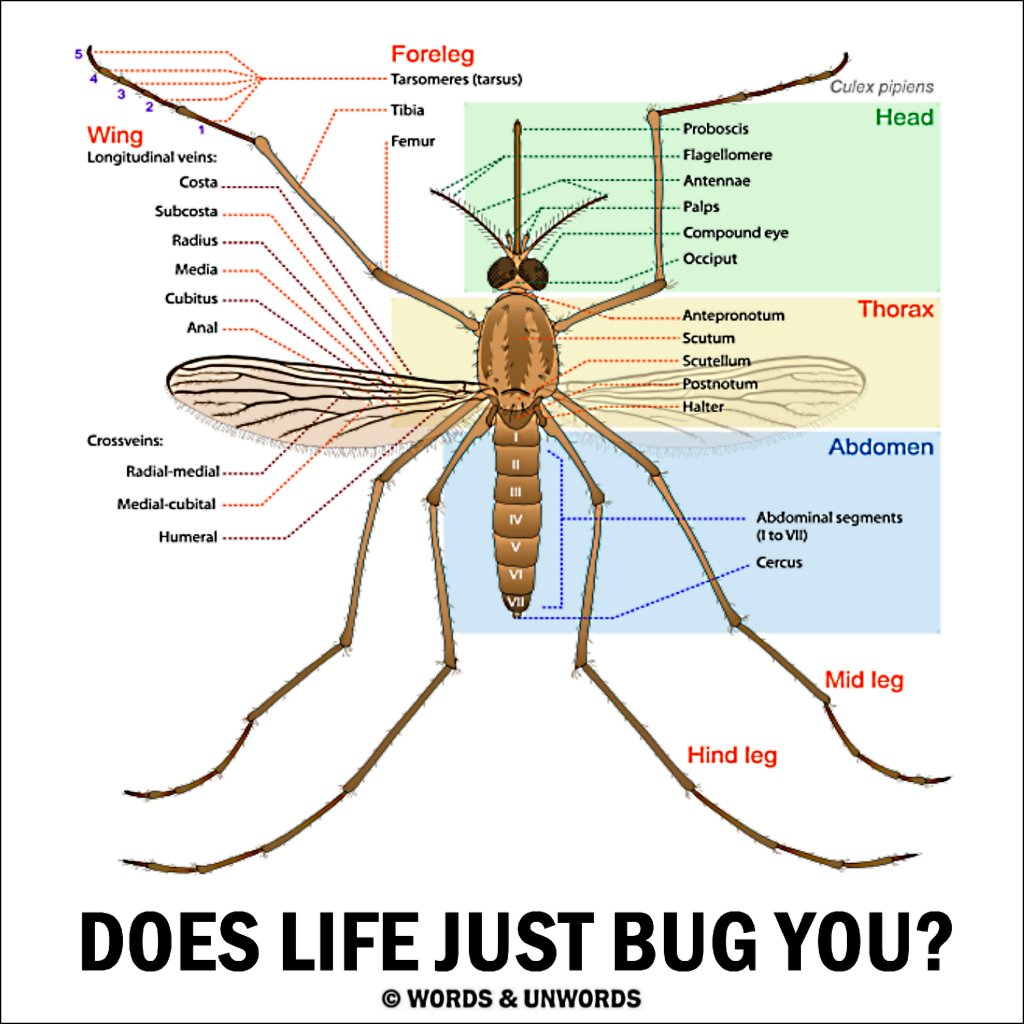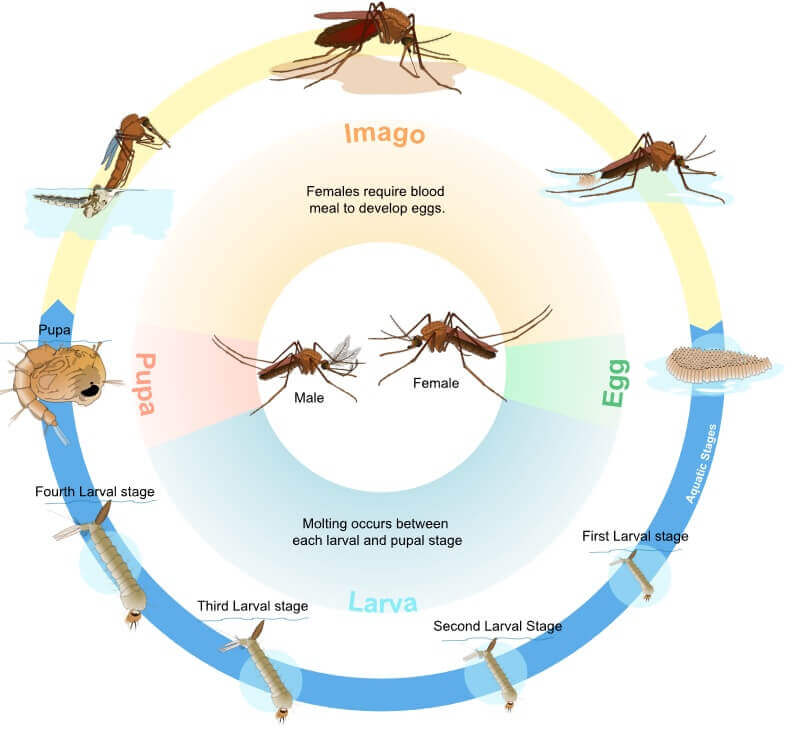
Life Cycle of Aedes Mosquitoes Ecofriendly mosquitotraps
Like all mosquitoes, anophelines go through four stages in their life cycle: egg, larva, pupa, and adult. The first three stages are aquatic and last 5-14 days, depending on the species and the ambient temperature. The adult stage is when the female Anopheles mosquito acts as malaria vector. The adult females can live up to a month (or more in.

Chapter 9 Mantis 1 Lessons Blendspace
The classic formulae in malaria epidemiology are reviewed that relate entomological parameters to malaria transmission, including mosquito survivorship and age-at-infection, the stability index (S), the human blood index (HBI), proportion of infected mosquitoes, the sporozoite rate, the entomological inoculation rate (EIR), vectorial capacity (C) and the basic reproductive number (R0). The.

Mosquito Biology Rutgers Center for Vector Biology
Female Anopheles mosquitoes can carry Plasmodium protozoan parasites, some of which transmit to humans. The majority of malaria caused by Plasmodium falciparum and Plasmodium vivax occurs in Africa. Between 2010 and 2017, there was a noticeable decline in malaria deaths and cases [].However, the decline has slowed in recent years, and in the most recent years, there has been an increase in the.

Anopheles mosquito lifecycle. Immature mosquitoes pass through aquatic... Download Scientific
A Venn diagrams showing the number of differentially expressed genes (DEGs) between whole body (WB), fat body (FB) and ovary (OV) tissues of blood-fed Anopheles gambiae.The numbers in the overlapping areas indicate genes that were common to both or to all three different time points. The number of DEGs was highest between the whole body and ovary samples.

Mouth Part of Male Anopheles Mosquitoes Diagram Zoology Diagrams Exam Diagram 2019 YouTube
The life cycles of Aedes, Culex, and Anopheles mosquitoes, from egg, to larvae, to pupae, to adult.

Anopheles Mosquito Drawing
The gametocytes, male (microgametocytes) and female (macrogametocytes), are ingested by an Anopheles mosquito during a blood meal . The parasites' multiplication in the mosquito is known as the sporogonic cycle C. While in the mosquito's stomach, the microgametes penetrate the macrogametes generating zygotes .

Pin de boyazn.boga em мудборд
Anopheles gambiae Giles is the most efficient vector of human malaria in the Afrotropical Region (CDC 2010). Thus, it is commonly called the African malaria mosquito. The Anopheles gambiae complex of sibling species (White 1974; Fanello et al. 2002; Coetzee et al. 2013) comprises eight reproductively isolated species that are almost.

Santa Clarita Mosquito Control & Prevention No Bugs
The gametocytes, male (microgametocytes) and female (macrogametocytes), are ingested by an Anopheles mosquito during a blood meal . The parasites' multiplication in the mosquito is known as the sporogonic cycle . While in the mosquito's stomach, the microgametes penetrate the macrogametes generating zygotes .

Anopheles mosquito lifecycle. Immature mosquitoes pass through aquatic... Download Scientific
. are two main features that can be used to distinguish between adult anophelines and culicines: the maxillary palps ( Fig. 9) and the resting position (Fig. 10). Female species of the genus.

The Mosquito Life Cycle
Anopheles ( / əˈnɒfɪliːz /) is a genus of mosquito first described by J. W. Meigen in 1818. Its members are sometimes called nail mosquitoes or marsh mosquitoes. [1] Many are vectors of the Plasmodium parasite of malaria in birds, reptiles, and mammals including humans.

Stages of the Anopheles mosquito lifecycle Download Scientific Diagram
114 Citations 19 Altmetric Metrics Abstract Background In 1987, Gillies and Coetzee published a pictorial key for the morphological identification of adult female mosquitoes. Since then, several new species of anopheline mosquitoes have been described. Methods The 1987 key to adult female mosquitoes was used as the template for the current key.

World Mosquito Day Tame the menace, control the spread of lifethreatening diseasesTech News
Anopheles gambiae Giles is the most efficient vector of human malaria in the Afrotropical Region (CDC 2010). Thus, it is commonly called the African malaria mosquito. The Anopheles gambiae complex of sibling species (White 1974; Fanello et al. 2002; Coetzee et al. 2013) comprises eight reproductively isolated species that are almost.

a drawing of a mosquito on a white background
Download scientific diagram | 3 External anatomy of mosquito larvae, dorsal view, with anal segment and siphon at posterior end rotated to provide better view. (A) Anopheline form (Anopheles.

Anatomy of an adult mosquito Download Scientific Diagram
Malaria is a mosquito-borne infectious disease transmitted by the bite of Anopheles mosquitoes. Accurate and timely identification of Anopheles larval habitats and analysis of environmental factors affecting the formation and stability of these locations are very effective in the prevention and spread of malaria. In the absence of sufficient field observations and environmental parameters.

Anopheles, Aedes, Culiseta, Culex mosquito life cycle Diagram Quizlet
reproduce. Only female mosquitoes bite and transmit malaria. Identification: Morphology: Worldwide, there are over 3,500 species of mosquitoes grouped into 41 genera. 837 of those species are in Africa. Human malaria is transmitted only by females of the genus Anopheles. Of the approximately 430 Anopheles species, only 30-40 transmit malaria.

Dorsal view of the general external anatomical features of an adult... Download Scientific Diagram
7 Citations 4 Altmetric Metrics Abstract Background The worldwide genus Anopheles Meigen, 1918 is the only genus containing species evolved as vectors of human and simian malaria.